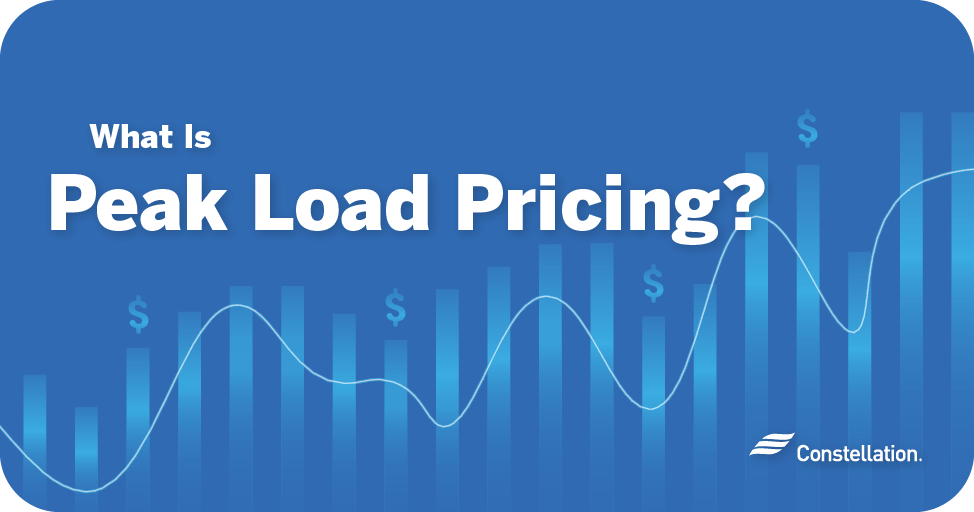Peak load pricing delivers efficiency benefits to utilities and cost-savings to customers. With so much attention on inflation and increases in the cost of power, consumers and businesses are looking at alternative approaches to pricing and ways to save money. As utilities modernize the grid and as consumers become more educated on how energy costs vary, peak load pricing is becoming a much-discussed topic. Here is how peak load pricing works and how your business can benefit.
What peak load pricing is and how it works
Understanding your small-business energy pricing is the first step in understanding what peak load pricing is. The purpose of peak load pricing, by definition, is that it is a pricing strategy that puts a higher price on goods and services during times when demand is highest. When it comes to electricity, peak load pricing is a tool for smoothing demand, which benefits the grid, from generation to distribution to usage by your business.
By charging more money during peak demand, power suppliers encourage some customers to alter their usage patterns. They might be able to change when they perform certain power-hungry tasks to low volume times. Doing so puts their demand for power during a less expensive time, so they can do the same work at a lower cost. The effect is to even out demand throughout the day and week, putting less stress on the system during peak load times.
Power companies must invest heavily in generation capacity to meet peak loads. If those peaks can be lowered and usage evened out, they will not have to invest as much in peak capacity facilities and can be much more efficient with resources. They can invest in optimizing the grid for normal consumption, instead of for peaks and valleys.
Understanding peak-load time vs. off-peak time
Consumers and businesses don’t use a steady amount of electricity all day or all week. Usage spikes during the day when most businesses are open. Usage falls off overnight and on weekends when many businesses are closed. The highest spikes and peaks in demand occur during the summer when consumers and businesses use air conditioning during the hottest hours of the day.
With peak load pricing, you pay more during high demand hours and days. At night and on weekends, demand isn’t nearly so high, so the price drops. In some markets, the cost of electricity is lower during cooler seasons when power demand for air conditioning is much lower.
Examples of peak load pricing
How does peak load pricing work? Power markets are not the only ones that benefit from peak load pricing. Demand varies in many kinds of businesses. Peak load pricing provides a financial incentive to move consumption from peak times. Peak load pricing examples start with power, but include other use cases:
- Electricity. During hours and days when demand is high, you will pay a higher price for power.
- Transportation services. During rush hour, you pay more for trains and buses. Airfare prices go up during holidays.
- Lodging and entertainment. Hotels in beach towns charge higher rates during the summer. You can find discounted movie tickets for matinees and weekdays, but will pay more to see the same movie on a Saturday night.
- Holiday items. Christmas ornaments and candy are expensive leading up to the holiday, but are half off the day after.
- Restaurants. If you have ever eaten an early dinner to get the early bird special, you have saved money with this peak load pricing example.
- Movers. Far fewer people move during the dead of winter. Most wait for nicer weather and for school to be out for the summer. If you move during the peak period between June and August, expect to pay more than if you moved in February.
Why is peak load pricing important to businesses?
With the price of electricity going up, peak load pricing might benefit your business. In addition to looking for ways to be more efficient in your use of power, you can investigate your options for saving money off your power bill.
You may find cost savings when comparing fixed-rate vs. variable-rate energy plans. When you understand how peak load pricing works, along with the factors that influence small business energy costs, you may be able to adjust operations to take advantage of when electricity rates are lowest. Smoothing out your demand so that you avoid using expensive peak load power can save you money.
Choosing the right energy plan can make all the difference. Most suppliers offer small businesses options that may be ideal for saving you money.
Is peak load pricing good for your small business?
Small business energy consumption is a major line item when it comes to costs for many companies. As you monitor your small business energy usage, you may discover patterns and efficiencies. Peak load pricing strategies give you an incentive to use energy during off-peak hours. It’s an important tool in managing an efficient grid and an efficient business.
